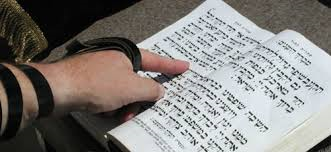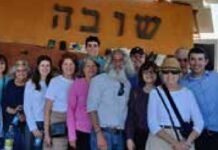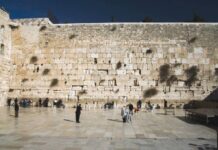
The Amidah in numbers
Looking closely at the Amidah allows us to see how numbers are at the root of the fabric that weaves together our main prayer. Number 18 takes centre stage, while number three also plays a crucial role.
The Amidah is known as the Shemoneh Esrei, or the 18 blessings. The 120 men of the great assembly, (Anshei Knesset Hagdolah) who originally composed this prayer, lived at the beginning of the Second Temple era. Among this assembly of prophets were Chaggai, Zecharia, Malachi and Ezra.
There are a number of reasons why 18 was chosen by them as the length for the Amidah. ( A 19th blessing was later added, but we will come to that in future weeks.) First, it corresponds to the amount of times that Hashem’s name is mentioned in the Shema. In addition, Avraham, Yitzchak and Yaakov’s names are mentioned together 18 separate times in the Torah.
In Parshat Pekudei, during the conclusion of the Mishkan building project that we start describing in this week’s sedra, the verse “ Like Hashem Commanded Moshe” appears 18 separate times. It was Moshe who first helped to establish structured prayer, praying to Hashem on many occasions to save the Jews.
Before we start the Amidah, we take three steps back. Subsequently, on three separate occasions, we bow in a three-staged procedure, first bending our knees, followed by our whole body and finish off by fully straightening up.
The symbolisation of the number three helps us to prepare ourselves mentally, before we talk to Hashem.
In the Mishkan and Temple, there were three main domains: the courtyard, where all the Jews were allowed, the Kodesh (Sanctuary) and the Kodesh Hakodoshim (Inner Sanctuary) where only the Kohen Gadol (High Priest) could enter, and only on Yom Kippur.
The three steps back that we take mirror the three unique stages of preparation that the Cohen Gadol underwent to get to the Kodesh Hakodoshim on Yom Kippur. This was where the Aron (ark) containing the Luchot, (Tablets) and Cherubim (Cherubs) were housed and was the closest place one could get to Hashem in this world.
Therefore, our sages instituted our three steps to give us that same awareness before we speak to the king of the world. By the time we start the Amidah, we should be in full concentration mode, completely ready to serve and beseech our creator for all our needs.
We bow again at the end of the first blessing and later at the end of Vchol Hachayim in this same three-staged routine, to ensure that we keep our intensity up throughout.
This hat-trick theme is just another one of many hidden themes throughout our daily prayers. Over the next few months, this section will explore the many layers of thought that went into the making of the siddur. By studying the siddur in depth, we will focus on the numbers that really count – namely our spiritual bank account.






















